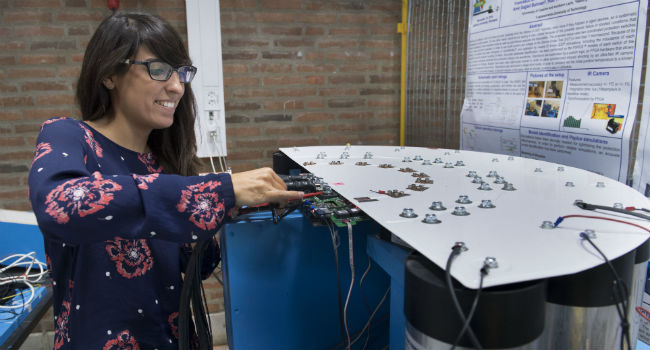When the industry develops components for renewable energy sources, such as wind turbines, there is an enormous competitive pressure that components last for many years without failing. Through her PhD research, Paula Diaz Reigosa of Aalborg University has discovered the reason why one of the most important components in power electronic systems fails and, not least, how to solve the problem. This means that in the future we will see components that can last 20-30 years – even under abnormal conditions such as the ability to withstand a short-circuit event .
The component that has been the focus of Paula Diaz Reigosa’s research is the IGBT (Insulated-Gate Bipolar Transistor), which is basically used as a power electronic switch in medium and high-power applications. This device is of particular importance because it brings the benefit of high efficiency and fast switching..
In her PhD research, Paula Diaz Reigosa has demonstrated that a deeper understanding and awareness of the IGBT’s physics and operating limitations helps to improve the reliability and robustness of the whole power system —. She has therefore also examined how we can achieve far greater reliability of the component by investigating the device through both circuit and device analysis.
- In my PhD study, I have faced the electrical failures by combining both internal physical properties of the power electronic switch and its interaction with the electrical circuit. And through this new approach I concluded that failures can be reduced through the optimization of the device design, explains Paula Diaz Reigosa.
Doped silicon
Today, the vast majority of components in power electronics devices are made of silicon and then doped with the purpose of altering the electrical characteristics of the power electronic switch. With the new knowledge about why the IGBT fails, Paula Diaz Regiosa is able to provide a method that can help prevent the occurrence of failures. The method entails slightly modifying the design of the IGBT by adding higher impurities to the silicon – in other words, shaping the doping of profile of the IGBT.. This doping makes it possible to change the properties of the silicon so as to produce a component with greater reliability and robustness.
- With this method, we will be able to significantly improve the reliability of the product with few changes in the production line. So the results hold enormous potential for the industry, says Paula Diaz Reigosa.
Unexpected failures are the nightmare that everyone in the industry wants to avoid. This is also why several companies has already contacted Paula Diaz Reigosa to corporate with her and University in the future.
About Paula Diaz Reigosa
- She earned her Master's degree at AAU, after which she began her PhD that she completed in September 2017.
- She is employed in a postdoctoral position at the Department of Energy Technology at Aalborg University.
- Paula Diaz Reigosa’s research has been recognized on several occasions. Most recently, she received the Will Portnoy Award at ECCE2016 conference, one of the largest conferences in the field of power electronics. She also received the award for the best scientific paper at the ESREF 2017, one of the top conferences in failure analysis, quality and reliability of devices.
- She was born and raised in Spain.
Contact
Paula Diaz Reigosa, Postdoc, AAU, pdr@et.aau.dk / +45 5022 9060

